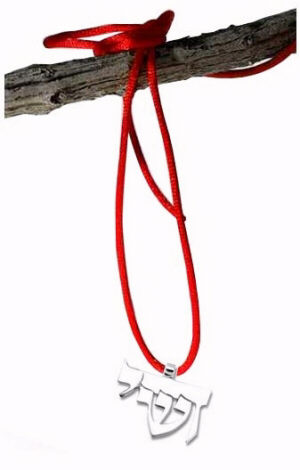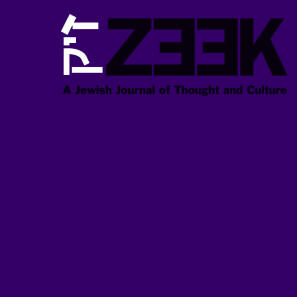 April 06
April 06
The Power and the Glory: A Critique of "New Age" Kabbalah
Dr. Jonathan Garb

And who by brave assent,
who by accident,
who in solitude,
who in this mirror,
who by his lady's command,
who by his own hand,
who in mortal chains,
who in power,
and who shall I say is calling?
-Leonard Cohen
One of the most notable trends in the realm of spiritual life across the globe in recent decades has been unprecedented growth in the area of mysticism and magic, in particular the movement generally referred to as the "New Age." Generally, the "New Age" refers to a complex of spiritual and "consciousness-raising" movements, originating in the 1980s but with roots in the 1960s and 1970s, and covering a range of themes, from spiritualism and reincarnation to holistic approaches to health and ecology. Not all spirituality is New Age, and not all of the New Age is spirituality, but the core notion of the movement is that a spiritual era is dawning in which individuals and society will be transformed.
In Israel, the New Age manifests wide diversity and influence, and can be understood as a new religious stream in Israeli society, crossing traditional boundaries which have typically divided the country between either "religious" or "secular" camps. Israel, in a manner disproportionate to its population, is a major importer and exporter of the New Age. Every year scores of New Age teachers offer widely attended seminars in alternative medicine, healing, and mystical and magical practice. Publishers specializing in New Age topics have translated hundreds of books. In addition, Israel is a leader in the export of mysticism and magic. Israelis and former Israelis teach in both East and West, and practices originating in Israel, such as the system of Avi Greenberg or the Feldenkrais Method,® have garnered major followings outside of Israel. As both "import" and "export," the phenomenon of the New Age can be understood as an important element in Israel's globalization – we can no longer comprehend new phenomena in Israel without relating them to developments in the world as a whole – a social and cultural shift that in and of itself has a tremendous impact upon Israel today.
In the last two decades of the twentieth century, Torah and Kabbalah have come to play a key role in the New Age. On the one hand, Kabbalistic groups, most prominent among them followers of Rabbi Yehuda Ashlag (1885-1954), the author of the "Sulam" commentary on the Zohar, have absorbed values and practices from general cultures of mysticism; on the other hand, these schools have spread Kabbalistic teachings to an unprecedented degree, ultimately creating an international Kabbalistic movement, the Kabbalah Centre International, that has devotees far beyond the confines of Jewish world, the most famous example being, of course, Madonna.
It is possible to point to several types of criticism against contemporary mysticism. Rationalists both religious and secular – the most famous amongst them being Yeshayahu Leibovich – reject all forms of mysticism and magic, and follow the growth of any movement employing them with anxiety. I do not participate in this criticism, as I see in both mysticism and rationalism viable expressions of the cultural and psychological richness of the human experience. In my opinion, mysticism is an authentic vehicle for the pursuit of wonder and the ineffable of which poets and artists also partake. But as one who usually sees mysticism in a positive light, I am also willing to criticize certain of its popular expressions. One form of this criticism is "internal," and I base it on the long legacy of cautions and concerns amongst traditional mystics themselves, and the second is "external," based upon contemporary concerns regarding power.

First the "internal" critique. Traditional mystics have long criticized mysticism that focuses on subjective experiences such as ecstasy as ends in themselves, at times even describing these experiences as a wrong turn on the mystical path. St. John of the Cross (16th century Spain) wrote that mystics must learn to part from ecstatic experiences just as an infant must be weaned from nursing from its mothers' breasts. For St. John of the Cross, ecstasy is an immature, passing expression of the mystical life. Similarly, in criticizing the Sufi ecstatic dancers – who have emerged to enjoy widespread popularity in our day – the great Muslim Sufi mystic Muhyiddin Ibn al-Arabi (12th-13th centuries) condemned their shift from serious mystical practice to what he considered to be "frivolousness." Even the Kabbalah of Abraham Abulafia, the most focused on mystical experience, is interested in experience not for its own sake but for the purpose of receiving prophecy. Those who engage in New Age spirituality for the purpose of "getting high" are, according to such figures, missing the point.
In addition, mystics of many religious traditions have rejected the use of mystical practices for the sake of personal material gain. In the Jewish world, Kabbalists traditionally emphasized practices intended for serving the needs of the divine realm, and not simple human needs such as personal advancement. According to Rabbi Meir ben Ezekiel Ibn Gabbai, amongst the great Kabbalists of the 16th century, a person mixing intentions of personal gain with mystical practice is akin to one who "brings uncleanness into the Temple and profanes the Holy of Holies." (Avodat HaKodesh 2, 6) Even those Kabbalists such as Rabbi Hayyim Vital – the major disciple of the "Ari" (Rabbi Yitzhak Luria) – who were more tolerant of those seeking personal gain emphasized that the Kabbalist should receive "his portion only at the end" (Shaarei Kedusha 3, 8). Traditional mainstream Kabbalistic traditions hold that one of the main goals of Kabbalah is human responsibility for serving the divine realm through mystical practice. Kabbalists affiliated with these traditional streams note time and time again that the Kabbalistic path is securely aligned with divine service though fulfillment of commandments and perfection of personal conduct. Rabbi Hayyim Vital, for example, lists complete obligation for the commandments and intensive examination of personal conduct as preconditions for any valid experience of prophecy via mystical practice (Shaarei Kedusha 3, 3). Kabbalistic literature teaches students a variety of internal, personal limits for controlling the study and use of esoteric knowledge in addition to well-known external restrictions such as age, Torah knowledge, and family status. And yet as is well known, the Kabbalah Centre and others regularly promise all variety of personal and financial gain to adherents, also stating that the benefits of Kabbalah are available to all.
A second form of my criticism of New Age phenomena comes not from within Kabbalistic and other mystical sources, but from more contemporary concerns: in particular, on issues of "power," an essential element in contemporary mystical manifestations and a very useful tool for tracking the key changes that have taken place in classical mysticism as it has evolved into contemporary mystical forms.
Many classical Kabbalistic writings explore Jewish mystical perceptions of "personal power" in the form of a leader who can be a "chosen one" or "tzaddik" for the community. Some Jewish groups such as the Hasidism forge these teachings into fixed social structures. However, it is very clear that this personal power was meant to be integrated into other forms of power – the power of the sefirot, holy places, Hebrew language, Torah, and so on. Furthermore, as noted above, focus on personal power was ultimately linked to serving the needs of the power of the upper realms. In contrast, in some forms of contemporary Kabbalah, personal power is an end unto itself, while traditional loci of power, such as the Torah and others, decrease in importance. (Ironically, despite the rhetoric of self-empowerment, in practice students are made extremely passive before powerful authority figures.) It is easy to identify the deep differences in traditional and contemporary approaches to personal power by comparing a text such Nefesh Hahayyim by Rabbi Hayyim of Volozhin – a major student of the Gaon of Vilna in the 19th century – which is essentially a song of praise for the sacrifice of the individual dissolving personal desires for the good of the power of the Torah – to contemporary Kabbalistic writings that describe the personal power and personal gain one can obtain by studying Kabbalah. Note, for example, the title of a "pop Kabbalah" book by Yehudah Berg, a follower of the school of Rabbi Ashlag and director of the Kabbalah Centre: The Red String Book: The Power of Protection (Technology for the Soul). Emphasis on "personal power" is a part of the fusion of these schools of contemporary Kabbalah with the New Age, a blurring of the core Jewish elements of Kabbalah.
Lower image: Gregorius Angulus Sallwigt, Opus mago-cabalisticum, Frankfurt, 1719.








